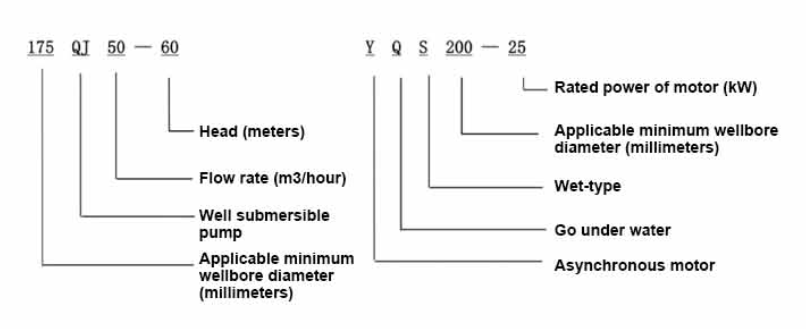Dec . 03, 2024 17:10 Back to list
Advantages and Applications of Submersible Pumps in Various Water Management Systems
Submersible Pumps A Deep Dive into Their Functionality and Applications
Submersible pumps are specialized pumps designed to operate underwater. They play a crucial role in a variety of industries, including agriculture, construction, municipal water systems, and wastewater management. By understanding how these pumps work and their diverse applications, one can appreciate their importance in modern water management systems.
Working Principle of Submersible Pumps
Submersible pumps are encased in a watertight housing that allows them to be submerged below water levels. The core of the pump consists of a motor, impellers, and a diffuser, all engineered to perform efficiently under high pressure. When the pump is activated, the electric motor spins the impellers, creating a centrifugal force that pushes water vertically up through discharge piping. This process effectively raises water from deep wells, aquifers, or underground reservoirs to the surface where it can be used or treated.
One of the critical advantages of submersible pumps is their ability to work in various water depths without losing efficiency. They are designed to handle the extreme pressures encountered at greater depths, making them ideal for deep well applications. Additionally, submersible pumps are often used in confined spaces where it is difficult to install surface pumps.
Types of Submersible Pumps
Submersible pumps can be categorized into several types based on their design and application
1. Dewatering pumps These pumps are used primarily in construction and mining operations to remove unwanted water from sites. They can handle both clear and muddy water, ensuring that work can proceed without interruption.
2. Sump pumps Commonly used in residential basements, sump pumps are designed to prevent flooding by pumping excess water out of the sump pit. They are generally automatic, activating when water levels rise.
3. Sewage pumps These pumps are designed to handle solids and wastewater. They typically come with grinders or macerators, enabling them to effectively reduce solid waste before pumping.
4. Deep well pumps Designed specifically for extracting water from deep wells, these pumps come equipped with multiple impellers stacked vertically, allowing for higher pressure and flow rates necessary for deep water extraction.
Applications of Submersible Pumps
pump submersible pump

The applications of submersible pumps are vast and varied
- Water Supply Submersible pumps are widely used in municipal settings to supply potable water. They retrieve water from underground aquifers and boost pressure in distribution systems.
- Agriculture Farmers use submersible pumps to irrigate crops. These pumps can draw water from deep wells to ensure a consistent water supply, especially in arid regions, thus increasing agricultural efficiency.
- Wastewater Treatment In sewage treatment applications, submersible pumps are integral in transporting sewage and wastewater to treatment facilities. Their ability to handle solids makes them ideal for these situations.
- Construction During construction projects, submersible pumps are essential for dewatering excavations, ensuring a dry working environment. This prevents flooding and allows for safer and more efficient operations.
- Environmental Applications Submersible pumps are utilized in monitoring and remediating groundwater contamination. They can draw samples for testing or remove contaminated water from sites.
Advantages of Submersible Pumps
Submersible pumps offer numerous advantages over traditional surface pumps
- Space Efficiency Their compact design makes them ideal for installations with limited space. - Energy Efficiency They tend to have higher efficiency ratings, consuming less energy in comparison to surface pumps. - Reduced Noise Operating underwater significantly reduces noise levels, providing a quieter solution in residential and municipal environments. - Lower Risk of Cavitation Since they are submerged, the risk of cavitation—a phenomenon that can damage pumps—is minimized.
Conclusion
In conclusion, submersible pumps are versatile and efficient devices essential for managing water across a variety of sectors. Their ability to operate submerged in water, combined with their effectiveness in different applications, highlights their significant role in modern water management systems. As technology continues to advance, we can expect even greater efficiency and capabilities from submersible pumps, ensuring they remain a cornerstone in the fields of agriculture, construction, and wastewater management for years to come.
-
Submersible Water Pump: The Efficient 'Power Pioneer' of the Underwater World
NewsJul.01,2025
-
Submersible Pond Pump: The Hidden Guardian of Water Landscape Ecology
NewsJul.01,2025
-
Stainless Well Pump: A Reliable and Durable Pumping Main Force
NewsJul.01,2025
-
Stainless Steel Submersible Pump: An Efficient and Versatile Tool for Underwater Operations
NewsJul.01,2025
-
Deep Well Submersible Pump: An Efficient 'Sucker' of Groundwater Sources
NewsJul.01,2025
-
Deep Water Well Pump: An Efficient 'Sucker' of Groundwater Sources
NewsJul.01,2025
-
 Submersible Water Pump: The Efficient 'Power Pioneer' of the Underwater WorldIn the field of hydraulic equipment, the Submersible Water Pump has become the core equipment for underwater operations and water resource transportation due to its unique design and excellent performance.Detail
Submersible Water Pump: The Efficient 'Power Pioneer' of the Underwater WorldIn the field of hydraulic equipment, the Submersible Water Pump has become the core equipment for underwater operations and water resource transportation due to its unique design and excellent performance.Detail -
 Submersible Pond Pump: The Hidden Guardian of Water Landscape EcologyIn courtyard landscapes, ecological ponds, and even small-scale water conservancy projects, there is a silent yet indispensable equipment - the Submersible Pond Pump.Detail
Submersible Pond Pump: The Hidden Guardian of Water Landscape EcologyIn courtyard landscapes, ecological ponds, and even small-scale water conservancy projects, there is a silent yet indispensable equipment - the Submersible Pond Pump.Detail -
 Stainless Well Pump: A Reliable and Durable Pumping Main ForceIn the field of water resource transportation, Stainless Well Pump has become the core equipment for various pumping scenarios with its excellent performance and reliable quality.Detail
Stainless Well Pump: A Reliable and Durable Pumping Main ForceIn the field of water resource transportation, Stainless Well Pump has become the core equipment for various pumping scenarios with its excellent performance and reliable quality.Detail
